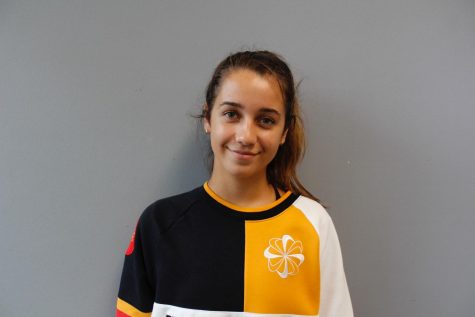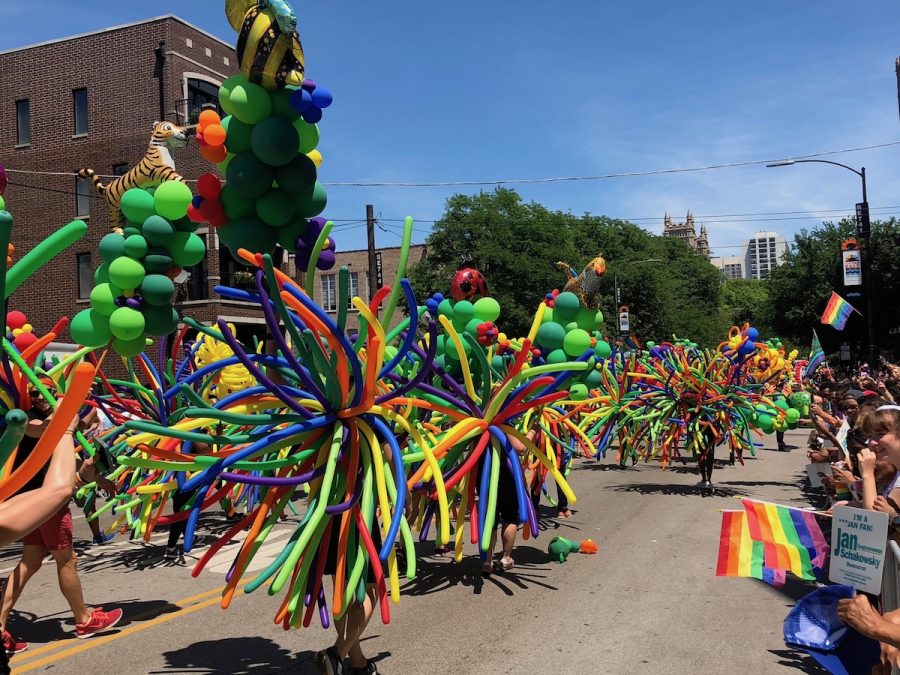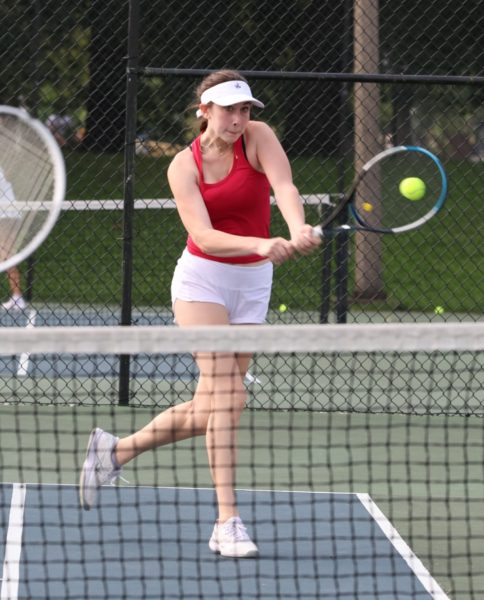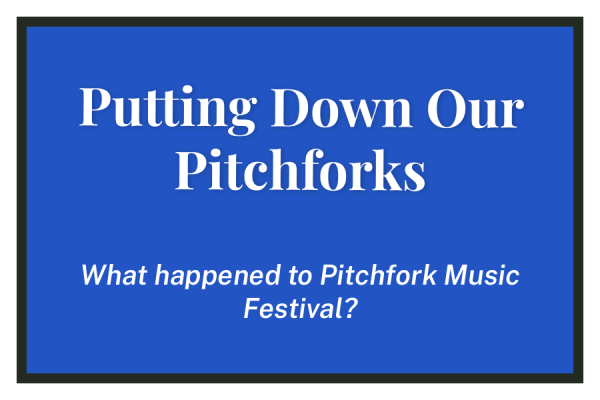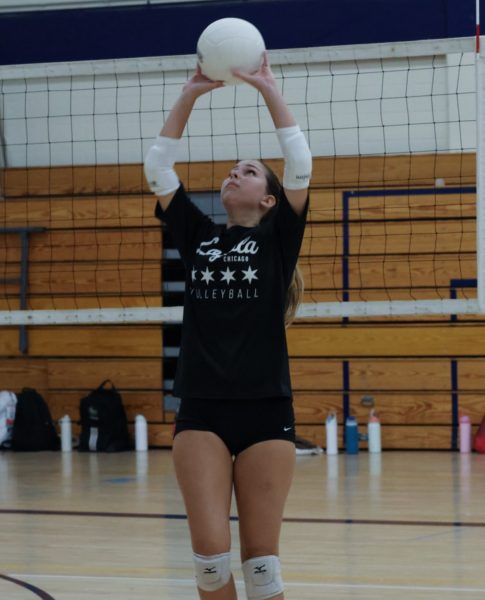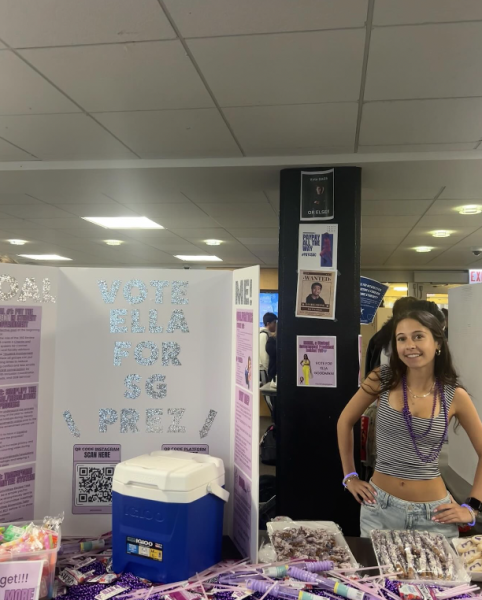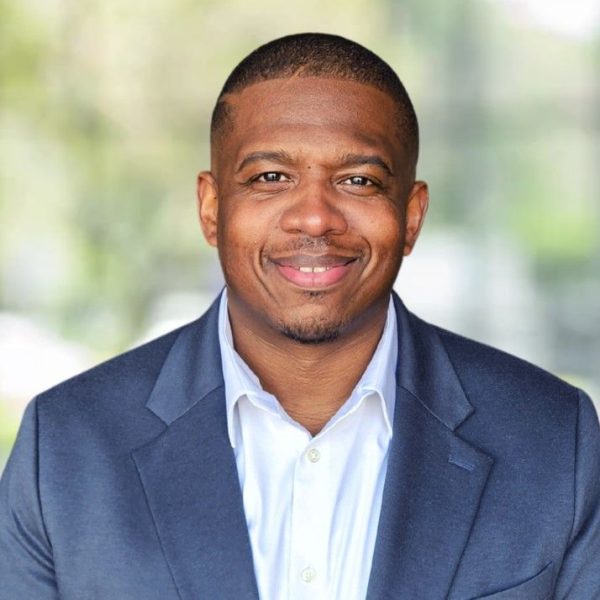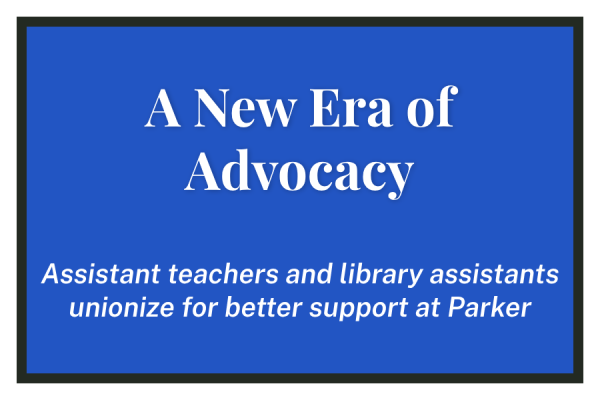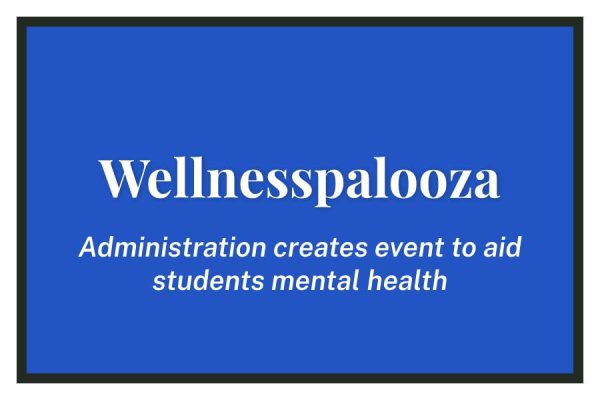Rainbow Connection
Parker Marches in the Pride Parade
Photo credit: Sofia Brown
Colorful arrays of balloons line the streets and delight onlookers at the 2018 annual Pride Parade.
In the weeks leading up to Chicago’s annual Pride Parade, owners of storefronts rushed to hang rainbow flags in their window displays as teenagers across the city flagged down every neon tutu and bottle of glitter.
On June 24, children ran through the streets with their faces painted in the shapes of cartoon-like animals, although hardly recognizable as the paint dripped off their skin in the blazing sun. Mothers and fathers of LGBTQIA+ children marched with wide smiles smeared across their faces. Whoops and hollers could be heard from the highest balconies overlooking Halsted and Belmont. Genders on all ends of the spectrum felt safe, and represented. All identities able to love one another freely. This was pride.
The Pride Parade, an annual celebration of the LGBTQIA+ community and an exciting wrap-up to Pride Month, planned to include 150 entries, including floats, decorated vehicles, performance groups, marching bands, and walking groups representing organizations, businesses, government officials, and communities across the city.
Amid a sea of painted school buses and dancers with wings made from neon balloons, was the Parker float. 50 Parker students and faculty held large rainbow-colored banners, and were suited in white t-shirts with the typical blue font replaced with the colors of Pride. “We’re paired with Catherine Cook, and we’re right around all the other schools and non-profits, and some of the churches,” said staff member and lead organizer of Parker’s involvement in the Pride Parade, Ryan Zaremba. “This tends to be the more calm part of the parade.”
Where many schools do not participate in the Pride Parade, fearing it will become a political statement, this is the second consecutive year that Parker has attended the event. “I think that it’s important for Parker to be in the parade because it demonstrates that the school is willing to show support for all of its students,” said junior Claire Levin, a member of the LGBTQIA+ community. “Being at the parade, Parker is showing that this support extends outside the walls of the school itself.”
Although it is not uncommon to overhear complaints being made about bringing politics into the classroom, Zaremba says that the overwhelming response to Parker’s involvement in the Pride Parade has been positive. “As far as I know, everyone has been very supportive and quite enthusiastic about Parker participating in the Parade,” he said, “I’m unaware of anyone who as opposed it.”
The Pride Parade began at noon at the intersection of Broadway and Montrose Avenue, and ended slightly less than three hours later at Diversey. Getting to the parade was made difficult by the sheer number of attendees. “Since there were so many people going to the parade, there were a lot of road blockings,” said junior Lily Koltun. “We had to walk pretty far to get there.”
According to attendance estimates, Chicago, the third largest Pride Parade in America, had 1 million people either marching or observing the parade from the sidelines. Red and Brown line trains were packed—body odor and glitter spreading like a disease. The Belmont station was crowded with trans men in short metallic shorts and a group of twenty-something-year-olds chanting “love is love.”
“This year’s pride was particularly big for me personally, in that I finally came out,” said Levin. “Even though it’s so far from being a big deal to be bi in a community as supportive as Parker and Chicago in general, it was truly an incredible experience to walk in the parade as an open member of the community.”
According to Zaremba, the Pride Parade is important in that it acknowledges members of the population who are often forgotten or excluded. “The LGBT community is growing as it becomes more accepted in society,” said Zaremba. “More people are coming out than ever before. They are not just coming out as gay or lesbian—they are coming out as bi. They are coming out as pan. They are coming out as trans.”
In 1970, Chicago held the first Gay Pride Parade in the US, later followed by New York City, Los Angeles, and other major cities across the country. 2018 marks the forty-ninth year of the Pride Parade, a national event that will be celebrated for years to come.
“The Pride Parade is important because it reminds those in the LGBTQIA+ community that there are people like them who are willing to support them, even if some of their other communities do not,” said Levin.
2017 was Parker’s first year participating in the Pride Parade. “The LGBT faculty and staff committee met for the first time last year, and we were just talking about ways to become more visible in the Parker community,” Zaremba said. “A number of ideas popped up but one of them was to enter in the Pride Parade. It was something none of us had done before, or even had much knowledge about.”
No Upper School administrators attended the parade. “I think the idea of ‘controversy’ was completely manufactured. From my point of view, there was no controversy,” said Zaremba. “It would be great to have that administrative support, but ultimately people have lives.”
Levin says that it was very rewarding to be in the parade, opposed to being a spectator. “Marching with Parker was a ton of fun! It’s a really different experience than just watching the parade, and the energy was super high. It was also a blast because I got to talk to a lot of strangers in a short period of time, and it really did feel community based,” said Levin. “I hugged maybe 20 strangers and high fived hundreds more.”
When asked why it is important for Parker to participate in the parade, Zaremba responded without hesitation. “Because it’s in our mission,” he said, “We’re supposed to be inclusive, we’re supposed to be diverse. Part of this mission is acknowledging and understanding other experiences.”
“We were simply celebrating love,” Koltun said.
